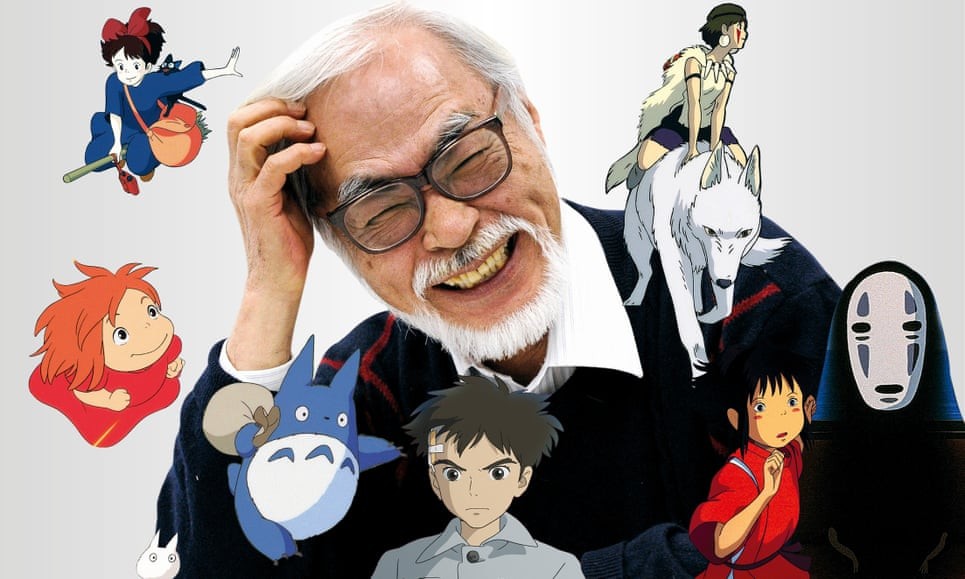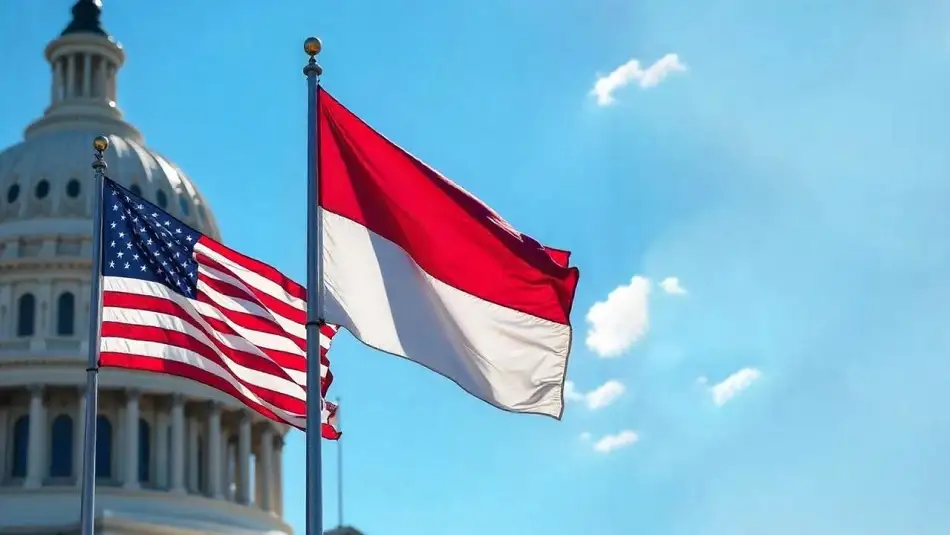Andi Noor Faradia Syarifin
Peace & Conflict Studies
Ankara Sosyal Bilimler Üniversitesi
There’s something oddly poetic in the way trauma and art often walk hand in hand, as if the scars of the soul give birth to the most sincere beauty. Few artists embody this truth more profoundly than Hayao Miyazaki, the revered maestro of animated storytelling. Born into a war-torn Japan and raised in the shadow of World War II’s devastation, Miyazaki witnessed humanity at its most destructive. But even known as cynic and an nihilist, he crafted worlds, soft, magical, and deceptively gentle, that summon us to look at the ruins with empathy, wonder, and a whisper of hope.
Miyazaki’s art never truly departs from the themes of human nature and its deeply yearning relationship with destruction. His stories unravel the illusion of human dominion over what is supposed to be man-tamed nature, a fragile myth born from arrogance and naivety. In his universe, it is easy to lose the exact border of definition of role between human and nature, they are but twin forces locked in a dance too complex to name, boundaries blur. Who is the aggressor, and who is the victim? Is nature external to humanity, or are we simply a part of its ever-pulsing rhythm, corrupted by the illusion of control?
Through lush animation and subtle narrative, Miyazaki wraps the world’s rot in a glowing bubble, comforting us with the hope that everything might be okay. But as his stories unfold, ambiguity pierces the dream, the comfort slips, revealing the whims of relevance in absurdity of our own world. And at the heart of these chaos, Miyazaki always returns to children. Their eyes, their wonder, their quiet defiance against disorder. Children in his stories do not solve wars or mend the world with grand heroics. They simply live through it. He shows Sosuke and Ponyo, delve in the warmth of ramen while storms rage outside their window. Or how Pazu’s obsession over Laputa was free from the thought of losing his love in its pursuit. Or how Mei escaped her dealing with her mother’s illness by befriending her neighbour, a spirit called Totoro.
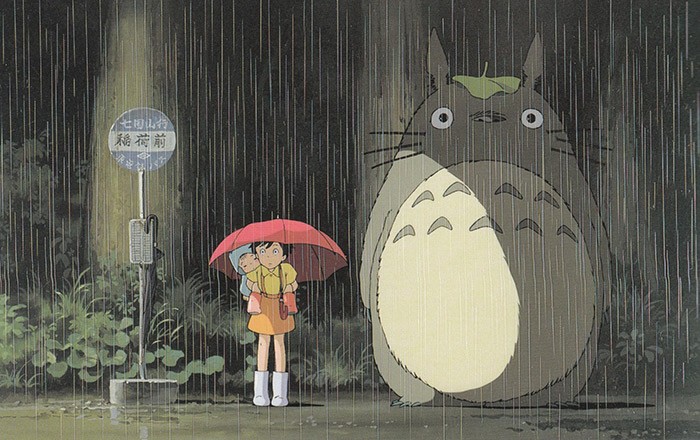
Sleeping Mei, Satsuki and Totoro at the bus stop
Many grew up watching these films, mesmerized by their wonder. As children, audiences followed the stories through the lens of characters their age, their playfulness, their imagination, their curiosity. But rewatching them as adults brings a different experience. The charm of Ponyo remains, but the attention couldn’t be helped to wonder about what must have been going through Lisa’s head, Sosuke’s mother; her fear for the children’s safety as their house faces submersion, and her sailor husband is nowhere to be found in the angry storm. Yet the next morning, Sosuke and Ponyo see their flooded street as the perfect day for outdoor adventures. In The Wind Rises, the love story between Jiro and Hanako still stirs emotions, but Jiro’s moral dilemma, torn between a love for scientific discovery and complicity in wartime machinery, now resonates more deeply.
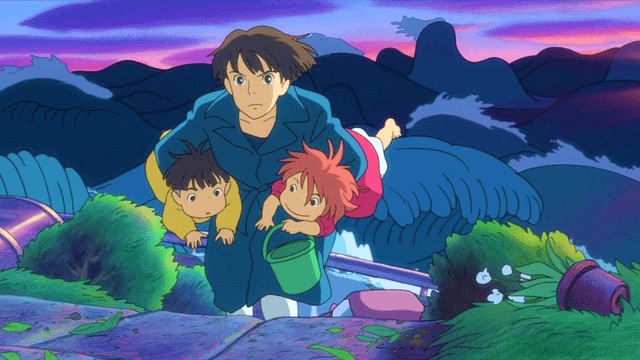
Lisa carries Sosuke and Ponyo away from the storm
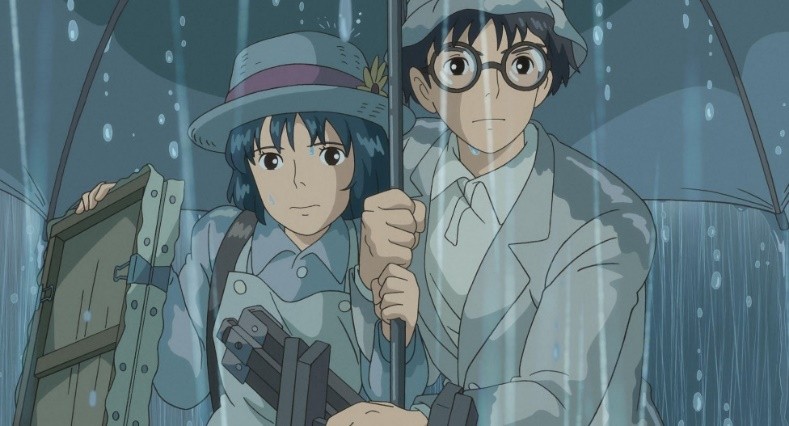
Jiro helping Hanako catching her umbrella
This shift in perspective brings with it a strange kind of mourning. At one time, it was easy to see oneself in the brave, wide-eyed Chihiro. Now, it’s easier to relate to the No-Face spirit, consumed by greed. From spirited San to calculating Lady Eboshi, from whimsical Howl to the haunted, war-worn Howl. This transformation seems inevitable. As Nietzsche once said, “He who fights with monsters should be careful lest he thereby become a monster.”
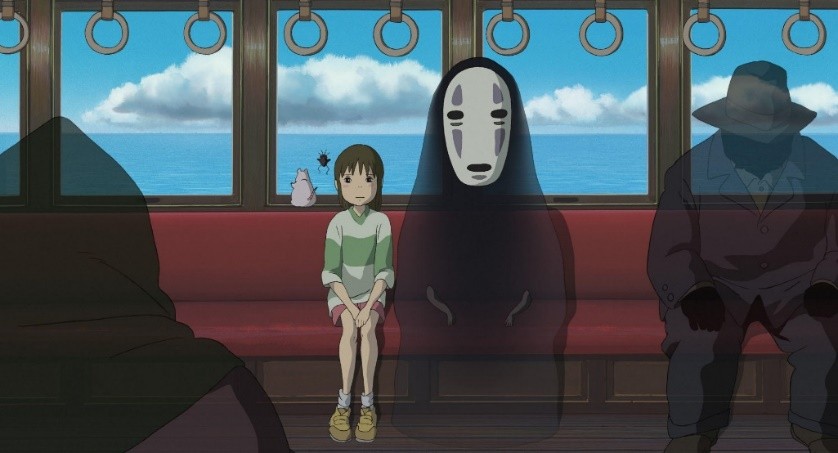
Chihiro and No-face on the spirit train
The most honest portrayal of this transformation may be Porco Rosso, a pig who was once a man, an ace pilot who abandoned his humanity not out of shame, but survival. Rosso, widely believed to be Miyazaki’s alter ego, is a war veteran who once belonged to an idealistic young army full of hope, only to have his soul crushed by the very war he fought for. He carries his past like an anchor, and his grotesque exterior is the physical embodiment of a spirit eroded by violence. He shows that even the most humane person has something dark and animalistic within. The price of living long enough may be the slow destruction of innocence and the inevitable demise of one’s very essence over time. But Rosso’s love for the young and their naivety reminds him of the beautiful part of himself he believed long lost. Even as a wandering vagabond, his deep disdain for fascism and feudalism continues to fuel his soul. For middle-aged Rosso, fighting for the young and their innocence might be what life is all about. And in doing so, perhaps he glimpses his past self, if only for a moment, feeling truly alive again.
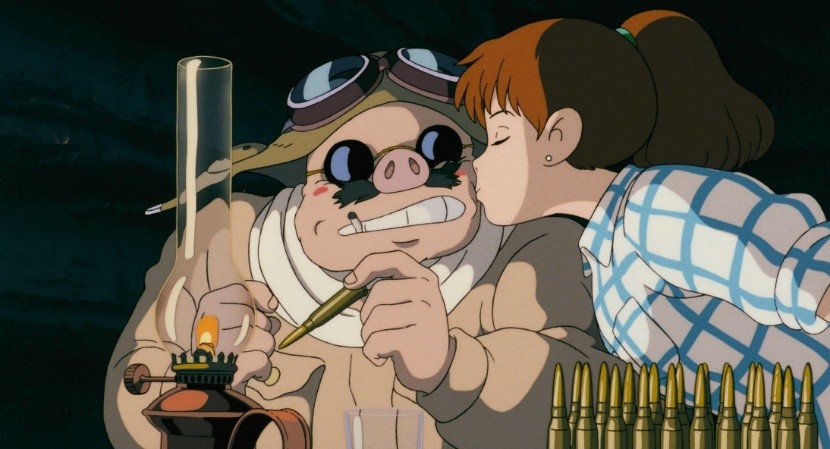
Rosso kissed by his young protégé Fio
In many ways, today’s world echoes the dissonance Miyazaki painted decades ago. Climate collapse redraws coastlines and chokes cities with unnatural heat. Wars, both new and unending, carve nations apart, displacing millions and reawakening old empires in search of lost pride. Genocide is livestreamed. Youth are raised under the looming shadow of nuclear threat, algorithmic numbness, and economic despair. Everywhere, technology seduces while meaning unravels. The illusion of progress shimmers like heat over broken asphalt, while questions of belonging, purpose, and survival echo louder with each passing crisis. And still, children must grow up in it. Still, they play, ask questions, and look for something gentle to hold onto. Much like Miyazaki’s characters, they inhrit not the answers, but the weight of continuing.
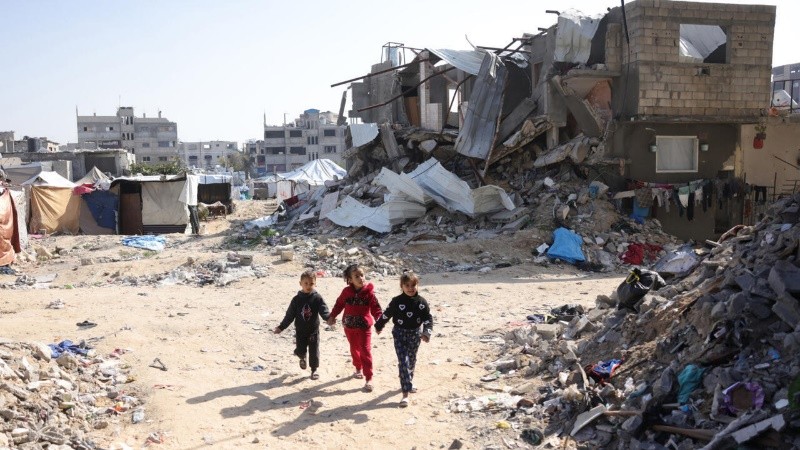
Palestinian children play among the rubble in Jabalia, northern Gaza © BASHAR TALEB / AFP
Princess Mononoke is perhaps the most explicit of Miyazaki’s works in portraying the battle between human ambition and the natural world. It does not offer a clean dichotomy of good and evil. Instead, it presents characters like Lady Eboshi, who both nurtures the vulnerable and wounds the forest, and San, raised by wolves, torn between the fury of nature and the complexity of humanity. The gods bleed. Forests die. Yet none are fully wrong or fully right. In showing this tangled web, Miyazaki illustrates how the relationship between humans and nature, when driven by force, even good intentions, can disrupt a delicate balance that sustains all life.
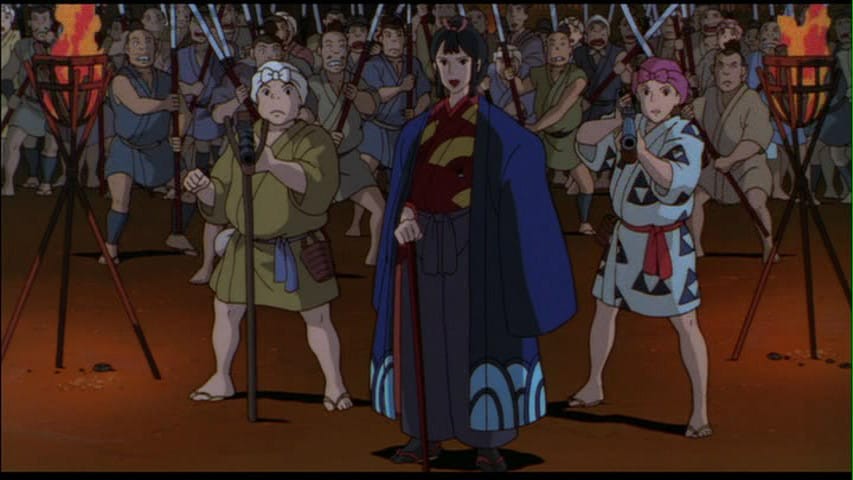
Lady Eboshi (middle), the anti-hero of Princess Mononoke, uplifts the marginalized while waging war on the forest to protect her people
That same tension simmers beneath Ponyo, where a seemingly innocent bond between a child and a magical fish threatens to tear the fabric of the natural world apart. Their affection, pure as it is, causes the ocean to rise and boundaries to dissolve. The imbalance is not born from malice, but from connection left unchecked, highlighting how even love, when unaware of consequence, can unravel worlds. Nature, in Miyazaki’s vision, is not just beautiful, it is sovereign. It responds to human action not as punishment, but as inevitable consequence.
In The Boy and the Heron, this inheritance becomes even clearer. Mahito, still grieving the loss of his mother, is thrust into a surreal world shaped by past wars, fractured desires, and the unfinished legacies of those who came before him. He does not choose this world. It is built for him, around him, often against him. And yet he must navigate it, not as a hero, but as a child trying to survive a future constructed by the trauma and ambition of adults. This is the silent thread running through many of Miyazaki’s films: children forced to inherit the consequences of choices they did not make, both the brilliance and the wreckage. And so it is with the children of today. While adults make decisions based on immediate needs, on profit margins and political terms, children are left to live in the aftermath. Too often, they are treated as symbols of the future rather than participants in its making.
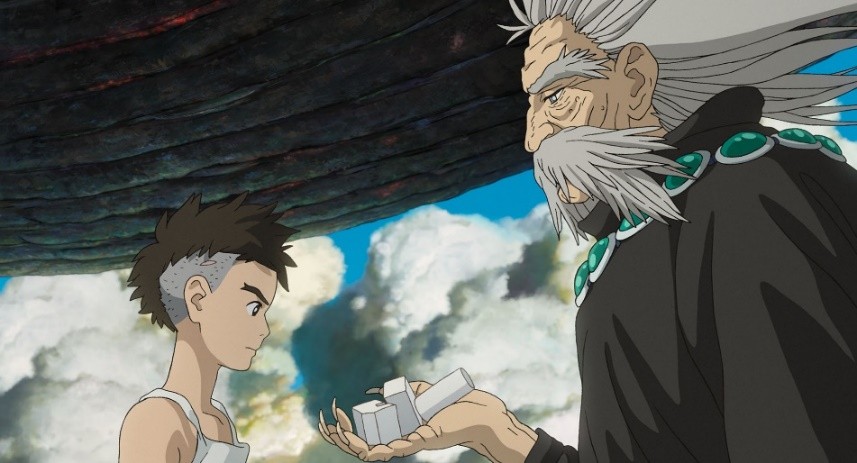
Mahito inheriting the crumbling world from his ancestor
But unlike past generations, the youth today are not silent. They know they were born into a world tilted against them, ecologically, economically, existentially. And they refuse to remain on the sidelines. Like Chihiro stepping into the spirit world, like San drawing her blade in defense of her forest, they demand to be seen. They demand their consent to be heard and counted in the rooms where power is exercised. They know, as Miyazaki has quietly told us all along, that at the core of every human conflict, be it war, greed, or ideology, lies a deeper crisis: how humanity interacts with the planet that sustains it.
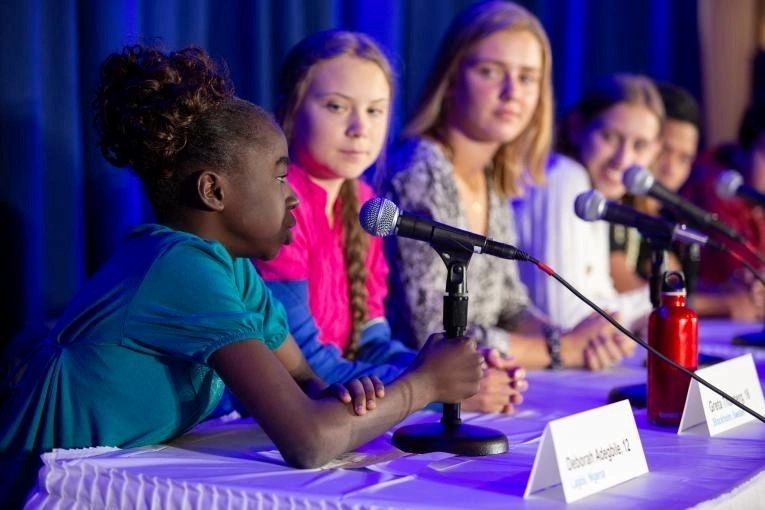
Greta Thunberg and Other Kids File UN Complaint
Because when the earth is burning, all other reasons for killing each other, territory, belief, history, become irrelevant. As the old saying goes: when you have a hundred problems, but one of them is your heart failing, then you really only have one problem. The children know this. Miyazaki’s films know this. And in the storm, in the fire, in the crumbling walls of inherited worlds, they continue to remind everyone of what truly matters.
Miyazaki doesn’t offer solutions. He offers mirrors. And in them, we see our worst and best selves, locked in quiet struggle. We see this in his characters who shift stances from evil to good, or vice versa, in almost all his stories. He doesn’t promise that everything will be fine but he does promise that even in ruin, there is still tea to be poured, love to be found, skies to be drawn, and stories to be told. And maybe, just maybe, that is enough to keep going.
In today’s world, where crises be they man-made or natural (note how they are spoken of differently, as if humanity were separate from nature) collide with relentless force, Miyazaki’s films feel not just comforting, but vital. They are sanctuaries for both children and the inner child adults forget they once were. In his stories, we are invited to witness chaos not with despair, but with curiosity. To find joy and even adventure in crumbling world. After all, as his films seem to whisper, since when were we not going extinct anyway? That’s always been the truth, might as well enjoy the ride.
References:
https://www.ghibli.jp/works/ponyo
https://www.ghibli.jp/works/kazetachinu
https://www.ghibli.jp/works/howl
https://www.ghibli.jp/works/chihiro
https://www.ghibli.jp/works/mononoke
https://www.ghibli.jp/works/porco
https://www.ghibli.jp/works/hotarunohaka
https://www.ghibli.jp/works/laputa
https://climatejustice.org.au/f/greta-thunberg-and-other-kids-file-un-complaint
